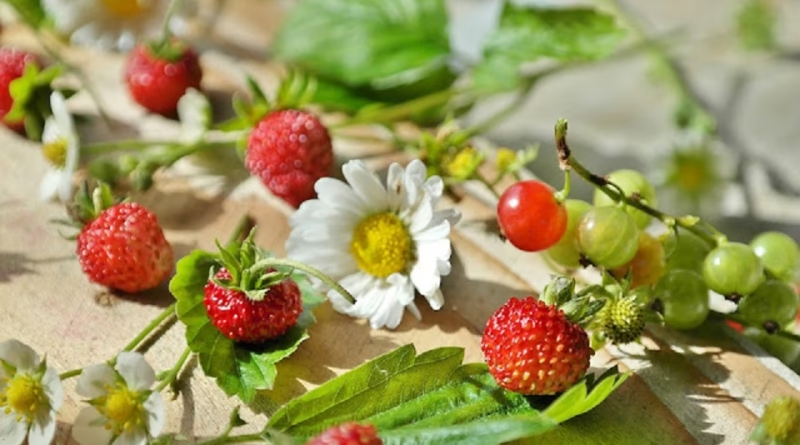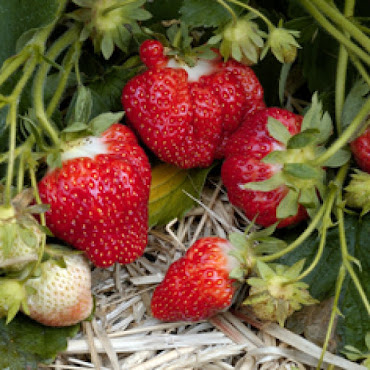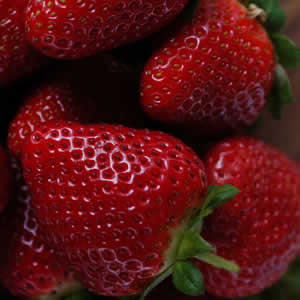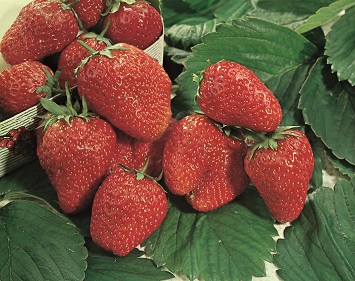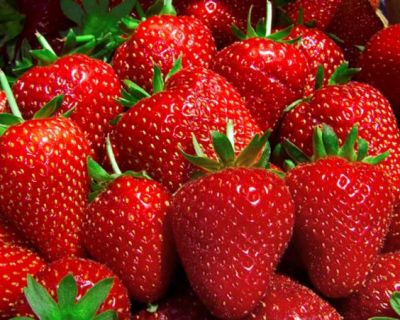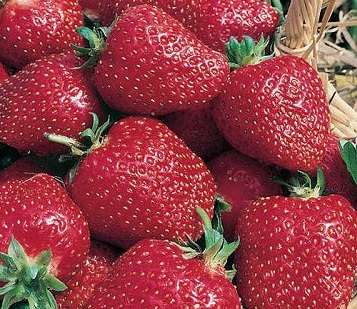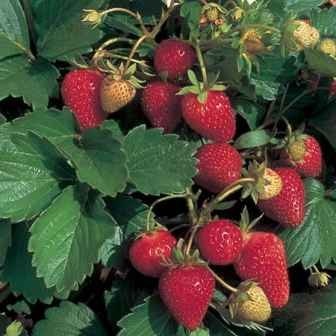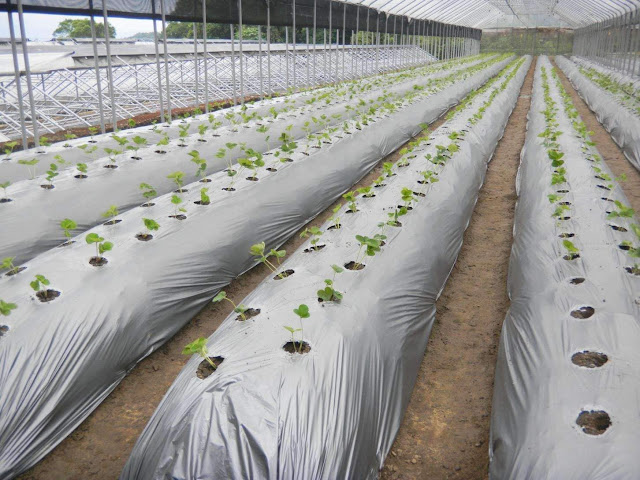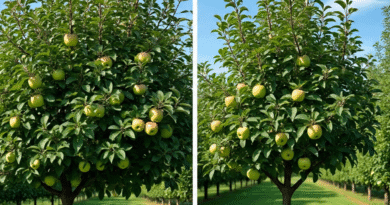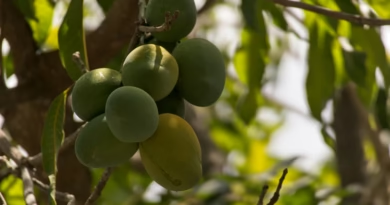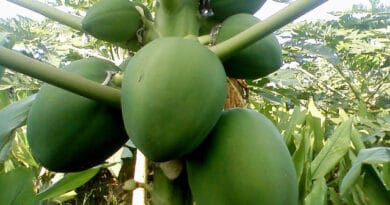Cultivation of Strawberry Crop; A Complete Information Guide
Cultivation of Strawberry: A Lucrative Opportunity for Boosting Farmers’ Income;
The strawberry is the most widely adapted small fruit that is grown across Europe, in all the states of the United States, as well as in Canada and South America. The global production of Strawberries is around 8.1 M tonnes annually. The major strawberry-producing countries as per 2019 data are China with 3.2 M tonnes, followed by the US with a production of 1.02M tonnes, and Mexico with 861.3 K tonnes, respectively.
In India, it is generally cultivated in the hills. Its major areas of cultivation in India is the Nainital and Dehradun districts of Uttarakhand, Mahabaleshwar (Maharashtra), Kashmir Valley, Bangalore, and Kalimpong (West Bengal). However, due to varietal development In recent years, strawberries have been cultivated successfully in the plains of Maharashtra around Pune, Nashik, and Sangali towns.
Importance of Strawberry ;
- First fruit crop micro-propagation studied.
- Suitable for a kitchen garden
- Flowers are borne in small clusters and are white
- Strawberry is a delicious fruit that can be eaten fresh in several ways.
- It also makes excellent ice cream and Jam on account of its rich aroma and is also a good source of vitamin C.
- It is a soft and highly perishable fruit.
- Artificial strawberry aroma is also widely used in many industrialized food products.
Nutrient Value of Strawberry Fruits ;
Nutrient | Value | Nutrient | Value |
Moisture | 91.0 g | Magnesium | 3 % |
Protein | 0.7 0 g | Potassium | 153mg |
Fat | 0.3 g | Vitamin C | 97% |
Fiber | 2.0 g | Vitamin B6 | 0% |
Carbohydrate | 8.0 g | Sugar | 4.9 g |
Calories | 33 Kcal. | Cholesterol | 0% |
Calcium | 1% | Cobalamin | 0% |
Iron | 2% |
|
|
Note ; *Per cent Daily Values are based on a 2,000 calorie diet. Your daily values may be higher or lower depending on your calorie needs
Health Importance of Strawberry Fruits;
1) Strawberry has an Important Role in a healthy immune system. Eat around 5 large berries to get 98% of your daily value of vitamin C.
2) Strawberries can reduce the risk of a heart attack due to the presence of anthocyanin. It may also help in preventing platelet build-up and even reducing blood pressure.
3) Strawberries support a healthy pregnancy due to the presence of folate or folic acid; one cup of strawberries provides 40 mg of folic acid.
Soil Requirement for Strawberry Cultivation;
Climate Required for Strawberry Cultivation ;
Strawberries perform well in temperate climate conditions. But some of the varieties can also be grown in a sub-tropical climate. It requires a daylight period of 12 hrs. or less and moderate temperature is important for flower bud formation. Each variety has a different day length and temperature requirement.
Important Varieties of Strawberry Fruit ;
Three types of strawberry Varieties are available:
1) June bearers that fruit once each season.
2) Day neutrals that fruit several times each season.
3) Ever bearers that, despite their name, bear fruit twice each season.
Important strawberry varieties cultivated in India are;
1) Chandler;
- b) It is very resistant to physical damage caused by rain. Plants are tolerant to viruses.c) Fruits are large, flesh and skin firm, and flavor excellent.d) It is suitable for fresh markets and processing.e) On average, a berry weighs 15-18 g. The fruits have good TSS (12%), acidity (0.85%), vitamin C (55.5mg/100g), and sugar content (6.1%).2) Tioga;a)An early–maturing cultivar, it is tolerant to viruses.b)Fruits very large, flesh and skin firm, dessert, and processing quality good.c)TSS 12.2%, acidity 0.98%, and sugar 6.2%.d) The average berry weighs about 9g.3) Torrey;a)Tolerant to viruses, it produces numerous runners.b) Fruits large, flesh and skin medium-firm, dessert quality excellent, processing quality good.c) TSS 12.0%, acidity 0.97%, and sugars 6.1%.d) Average berry weights 6.9g.4) Selva;b) it has the capacity to produce off-season fruits.c) It is different from day-neutral or ever-bearing types.d) Fruits large, flesh and skin firm, conic to blocky in shape, dessert quality good.e) It can be handled and shipped fairly well. Skin bright red, attractive, flesh red, internally somewhat hollow, light in color at the core,f) average berry weighs 15-18g, TSS 11.1%, acidity 1.0% and sugar 5.5%.
5) Belrubia) Fruits large, conical (necked fruit), skin bright red, flesh attractive red, somewhat firm, less hollow at the coreb) high quality, sweet, slightly subacid, average berry weight 15 g, TSS 11.8%, acidity 0.98%, sugar 6%.c) Plant produces adequate runners.6) Fern;b) Fruits large, medium, conical, solid internally, slightly hollow, skin red, flesh red, firm, flavour excellent, suitable for fresh market and processing.c) It tastes sweet to slightly subacid.d) Average berry weight 20-25g, TSS 11.2%, acidity 0.98% and sugars 6.1%.
7) Pajaro;a) It is very successful under the summer system.b) Plant tolerant to the virus.c) Fruit has good dessert and processing quality.d) Fruit is quite susceptible to physical damage caused by rain.e) Fruits large, flesh very firm, skin firm, red color.f) average berry weighs 7.6g, TSS 12.2%, acidity 0.97% and sugars 5.5%.8) Other Varieties;Besides these Premier, Red Coat, Local, Jeolikot, Dilpasand, Bangalore, Florida 90, Katrain Sweet, Pusa Early Dwarf, and Blakemore are also grown.Preparation of Land for Strawberry Cultivation ;
Plough the soil during summer with the help of a turning plough which is followed by repeated ploughing to make soil friable, and remove weeds, and stubble.
Soil fumigation with a mixture of methyl bromide 67% and chloropicrin 33% helps to increase the root system, reduce fertilizer requirement, and control the weeds.Planting of the Strawberry Crop ;
The strawberry crop is commercially propagated by runner plants. For large-scale propagation of virus-free plants, tissue culture is widely used.
a) Time of Planting ;
- In the hills, it should be planted in March, April, September, and October. whereas in the plains it should be planted in Jan – February
- In Maharashtra, planting of strawberries during November to December.
b) Spacing;
- Strawberry planting distance varies in regards to the type of variety, considering the planting & type of land.
- The recommended spacing of 30 cm. x 60 cm. is usually followed. Whereas in the certain model scheme, a spacing of 30 cm. x 30 cm. with a population of 22,000 plants per acre was commonly observed in areas covered during a field study.
c) Treatment; The roots of the runner should be washed and treated with Carbendazim (2g/L water)
Requirement of Fertilizers in Strawberry Cultivation;
- Apply 25-50 tonnes of well-decomposed farmyard manure at the time of field preparation
- The recommended doses of the fertilizers are N: 75 -100 kg, P2O5: 40 – 120 kg, and K20:40-80 Kg.
- Fertilizers should be applied in three split doses, 20:40:40 kg NPK /ha, along with FYM should be given as a basal dose and the rest in two equal splits.
- Manures and fertilizers should not be mixed too deeply, as the roots of strawberry plants become so hard at a depth of 20 to 30 cm.
- Foliar application of Urea (2%), ZnSO4 (0.5%), CaSO4 (0.5%), and Boric acid (0.2%) is beneficial for higher and better yields.
Irrigation Requirement in Strawberry Crop;
- As the strawberry crop is shallow-rooted, it requires frequent irrigation with a lesser amount of water in each irrigation, and for this reason, a drip irrigation system is highly recommended for strawberry cultivation. Heavy irrigation may result in vigorous vegetative growth at the expense of the reproductive growth of the plant. Excessive irrigation may increase the chance of Botrytis
Training in the Strawberry Crop;
- Usually, four different types of training systems are followed to train the strawberry crop viz.
- a) matted row,b) spaced row, c) hill, and d) plastic mulch.
Usually, a matted row system is followed in India.
- Matted Row System; The Matted row system is simple and the least expensive. In this system, the runners are usually planted at 90cm X 45cm spacing. After completing the initial growth of the first year, runners are allowed to cover the free space all around the mother plants, ultimately covering the whole free space and giving the appearance of the mat.
- spaced row System; It is suitable for strawberry varieties that produce moderate to weak runners. The daughter plants are spaced at definite distances by covering the selected tips of runners with soil that becomes plants. This is done till the desired number of daughter plants are obtained for each mother plant. The runners formed, later on, are removed.
- Hill system; This system is followed for the varieties developing a few runners. All runners are removed from the mother plant. The individual plants become large and bear more than those in a matted row. The plants are planted 25-30cm apart in twin rows and 100-110cm spacing between twin rows. A small tractor can use for tillage. In case cultivation is done manually, the rows can be spaced closer at 60cm. in some cases, triple rows are set.
Plastic film; the Green or black plastic film is used as a mulch for the hill system to control weeds and conserve moisture, but on hot days some scalding of berries takes place. In this system, berries are kept clean, and reduced rot and mold. The plants bloom earlier. These are prone to damage by frost.
Intercultural Operation in the Strawberry Crop ;
- In a matted row system, extra plants should be removed from the outer side of the rows during late summer and autumn
- The strawberry crop should be weed-free during the first season by the application of harrowing, Ploughing, and herbicides or plastic mulch. It must be ensured that the soil remains around the crown without covering them
- The flower stems should be removed as they appear on the plant after planting. If not removed, flowers will create a drain on the plant, reducing the vitality, number, and size of the daughter plant
- In the Hill system, runners should be cut as and when they appear.
Mulching in the Strawberry Crop:
Mulching provides numerous advantages to the strawberry fields. It reduces weed growth, due to the time and expense of weeding, reduces remarkably. It reduces water use because it prevents the sun from hitting the soil, which reduces water evaporation. It also helps in improving the soil quality as it speeds up the decomposition process. Mulching should be done just after planting (before the start of their growth). Mulching is of two types
1) Inorganic mulch – For inorganic mulching, Black plastic film (widely used) and green plastic film are used.2) Organic mulch – For organic mulching, leaves, wheat, paddy straw, newspaper, and dry grasses, etc., are usedUsages of Growth Regulator in Strawberry Crop;
Application of GA3 (50 ppm.) spray four days after flowering and maleic hydrazide (0.1-0.3%) spray after flowering increases the yield by 31-41%. Morphactin (@ 50 ppm.) improves the fruit sizeThe Disease and Pest Management in the Strawberry Crop;
a) Diseases Management in Strawberry crop;1)Verticillium wilt; The older leaves of the plant turn brown and shriveled, and finally plants may die.
Control; 1) Follow the proper crop rotation2) Soil fumigation with formalin (5000 L/ha) or Chloropicrin (210 L/ha).2)Leaf spot complex: Spot of different shapes and sizes are visible on the leaves during the rainy season, which results in drying and defoliationControl; Apply 2-3 sprays of Hexaconazole (100 ml/200 L water) or 5 sprays of Carbendazim (100g/200 L water) at 21 days intervals.b) Pest Management in Strawberry Crop;1)White grubs and Cutworms: Cut the root and stem of young plants
- Control; Deep ploughing and Drench the soil with Chlorpyriphos @ 2ml/L water.
- 2) Root weevil; It feeds on the rootlets, makes deep tunnels in the crown base, and ultimately the plants collapse.
- Control; The application of Carbofuran (6-10 kg/ha) and Parathion (0.017 %) around the plants can effectively control the insect.
Harvesting of the Strawberry Crop;
The yield of the Strawberry Crop.
Storage;
Fruits can be stored in cold storage at 320C for up to 10 days. For distant marketing, strawberries should be pre-cooled at 40C within 2 hrs. of harvesting and kept at the same temperature. After pre-cooling, they are shipped in refrigerated vans.
Read Further;
Cultivation of Grapes in India; A complete information Guide
Cultivation of Dragon Fruit in India; A full information Guide
